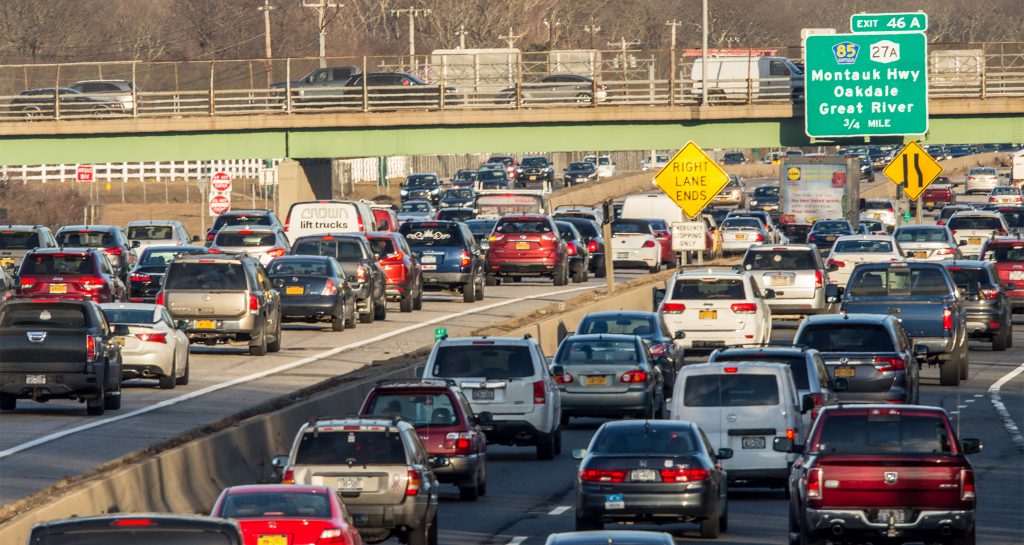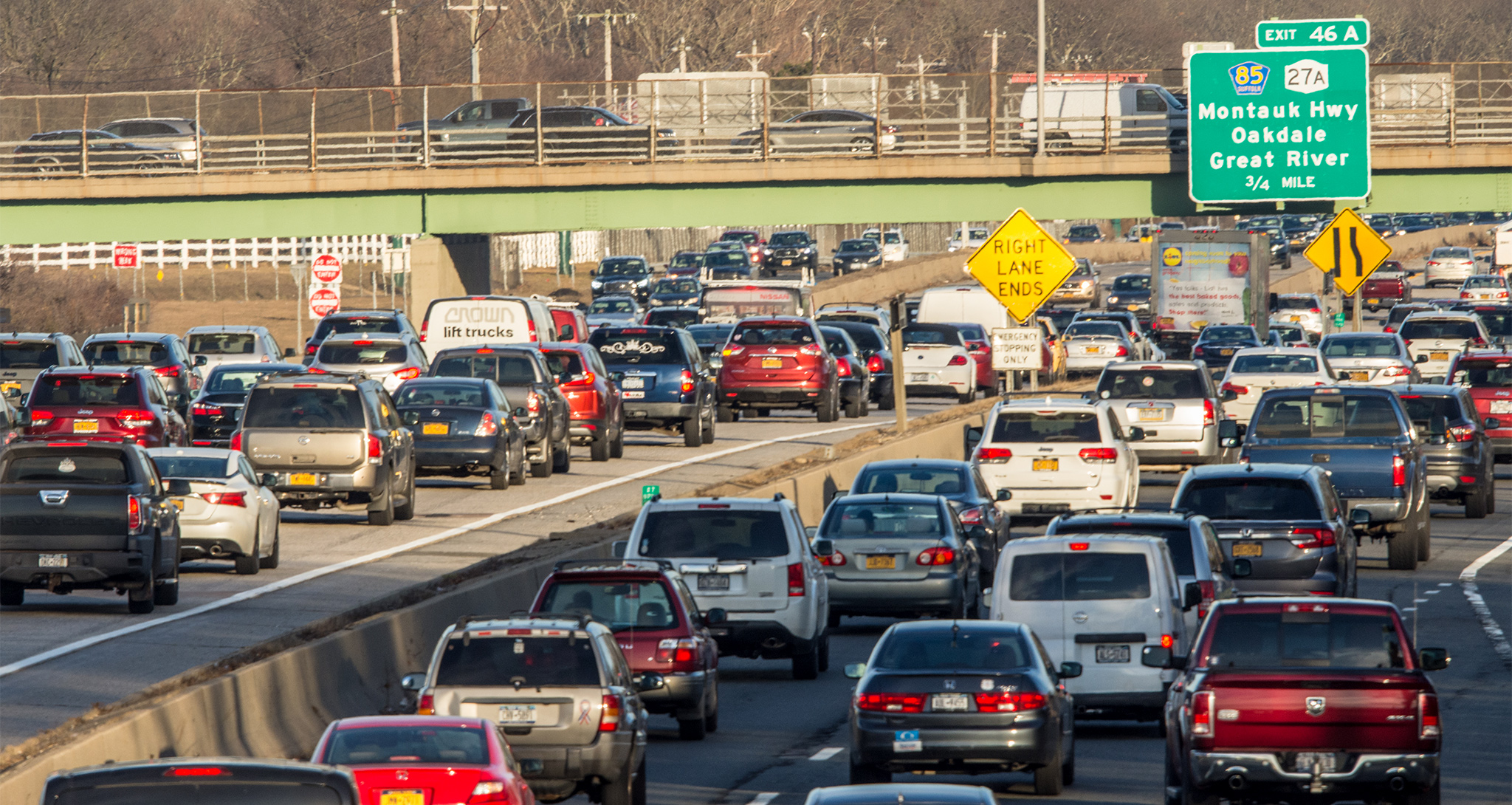By Kevin Lake, Staff Writer
In 1908, just a little less than a dozen miles away from what is now the Long Island University Campus, the first parkway for cars in America was built. The Long Island Motor Parkway was constructed exclusively for automobiles and was financed by the wealthy Vanderbilt family. Many feel that the motives of the development were not completely altruistic and in fact, had nothing to do with transportation. The two reasons for the road’s existence were so the Vanderbilts could host safer races, and more relevant to driving, so that the public could develop interest and use for this new vehicle.
Fast forward a century later and it’s clear Vanderbilt’s gamble paid off with Long Island being incredibly car-dependent. According to the U.S Green Building Council, there are about 2.3 vehicles per household in Suffolk County and 2.1 vehicles in Nassau County, which is well above the national average. Nationally, 37.1 percent of households own two vehicles, while in New York State as a whole, the average is 1.3 vehicles per household.
“The Long Island Expressway? Probably one of the worst of all parkways in New York. There’s always traffic, no matter what,” senior social work major Leo Weiss said.
Weiss’ sentiments are not unpopular at all as many others have frustrations with the Long Island highway system
“Yeah, you go from point A to point B, but with the amount of congestion combined with the attitude of New Yorkers trying to get to work in the city, it creates a very unreliable motorway. Getting to and from a place is hard and things shouldn’t be 15 minutes away when it’s less than a 2-mile drive,” senior business major Daniel Tellerman said.

Long Island’s traffic is far from improving. According to Newsday, road dangers have seen a massive rise in the last few years with 2022 seeing a 29 percent increase in fatal auto accidents since 2019 with an average of five casualties every week and 243 reported deaths for the year.
While you may believe that public transportation could serve as a better alternative, many issues plague the trains and bus systems as well. One of which is the actual time it takes to traverse compared to an automobile. If someone wanted to travel to the south shore of Long Island, let’s say Long Beach for example, it would take about half an hour to travel by car but an hour and forty-five minutes by public transportation, which is a massive amount of additional time not even including the stress that comes with managing schedules and the shortcomings of our transportation’s infrastructure. Recently the Long Island Rail Road (LIRR) has seen many late-night delays for ongoing construction causing up to five hours between some train times.
Robert Moses, arguably the most influential city planner in New York City and Long Island, constructed numerous underpasses and highways across the state, but it’s been widely acknowledged that he had some very explicit bias. Robert Caro’s 1974 book “The Power Broker” which interviewed many close associates of Moses states that one of the reasons behind the famously low bridges in the Jones Beach area was to keep minorities and those of lower income off the beachfront since they were more likely to travel via buses.
Students expressed that they view this as problematic.
“He purposely developed the infrastructure of Long Island to segregate communities. If you look at minority communities and you look at different ethnic groups, it’s very clear, their communities are redlined,” Tellerman stated.
The car was not only a mode of travel in Moses’s Long Island plan, but a barrier to remove groups he was prejudiced towards. The lower bridges made it harder for people to even enter towns they may have been interested in, creating the redline effect.
The last major problem for the world and our driving-centric is the carbon emissions produced by automobiles. Long Island in particular has many individuals who choose to drive alone. According to the American Community Survey, 72 percent of Long Island residents drive by themselves to work. The lack of carpooling and the consequential usage contributes to both climate change globally and traffic locally.
“It’s a very important issue right now, we’re supposed to advocate for environmental justice and it’s frustrating when not everyone is doing their part,” Weiss said.
In recent years, the push for walkable communities has become more vocal with many believing it will correct societal issues and build stronger neighborhoods.
“I think that almost everyone, when they graduate college, talks about how college is the best four years of their life, and everyone has very different college experiences. So you wonder ‘Why is that?’ I do believe that it’s because for most people, it’s the only four years of their life where they’re living in a walkable community, and where they’re in somewhere that has everything within a one or two-mile radius and you don’t have to rely on a car to see friends. We don’t have to rely on their car, to go to work or to go to their classes or to work out and so it creates spontaneity and ease in all aspects of this environment,” Tellerman stated.
It’s hard to know what the future holds for Long Island’s layout, but cities globally have made efforts to remove car lanes for sidewalks, bicycle paths and railroad tracks. Students hope that perhaps our neck of the woods isn’t far off.



Be First to Comment